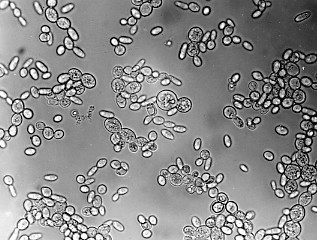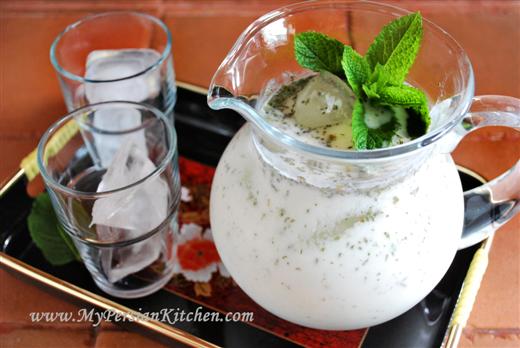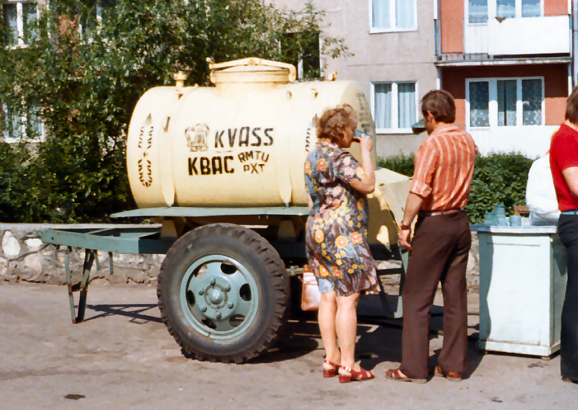This is almost too easy, I can’t believe I haven’t thought of it before.
Cultural Diplomacy is defined by the Institute for Cultural Diplomacy as an “exchange of ideas, values, traditions and other aspects of culture or identity, whether to strengthen relationships, enhance socio-cultural cooperation or promote national interests.” It can include the use of music, dance, sports, or other manifestations of “culture” for diplomatic ends: creating or strengthening bonds, increasing cooperation, nation-branding, and more. It can also include, of course, food. Culinary diplomacy and its sibling gastrodiplomacy are forms of cultural diplomacy; a nation or people’s cuisine is an important aspect of its culture.
Do you know what’s also an important aspect of a culture? Its cultures. Bacteria and yeasts, I mean.

The word “culture” in the societal sense and in the biological sense come from the same word, colere, which in Latin means ‘to tend or cultivate.‘ In the former sense, groups of individuals are cultivated into a group with a shared value system, customs, and institutions; in the latter sense groups of bacteria are cultivated into a colony with a shared goal of survival and mutual benefit [n.b. I’m certainly not a microbiologist and the last time I studied biology was almost 15 years ago, so please excuse or help me correct any factual inadequacies here.]

Cultured foods — those that have been fermented in some way — are becoming increasing popular in the United States and around the world. Probiotics and healthy bacteria are all the rage now to promote a healthy biome and to feed our ailing gastrointestinal systems, roughed up by years of antibacterial regimens. Yogurt is cool again, as are kefir, skyr, doogh, lassi, labneh. Bacterial friends are being introduced to our gut everyday by these products, including Lactobacillus rhamnosus, Lactobacillus casei, Streptococcus thermophilus, and all sorts of unpronounceable little guys. We’re also being introduced to new cultures — kefir was originally from the Caucusus, skyr from Iceland, doogh from Iran, lassi from the Indian subcontinent, labneh from the Levant. And it’s not just dairy products — there’s kombucha, the fermented tea that likely has its roots in Manchuria, fizzy tibicos from Mexico, and Russian Kvass. The list of fermented foods and drinks — and where they originate — is endless.



So how about come real cultural diplomacy to strengthen national relationships, drive tourism, and promote cooperation? Russian Kvass is starting to become popular in the US, why can’t Obama and Putin sit down for a frothy glass and have a talk? The Iranian Ministry of Tourism should launch a “Got Doogh?” campaign to bring visitors curious about the minty, refreshing yogurt drink. Kim Jong-Un could even get on board and reach out to South Korean president Park Geun-Hye with an offer of fermented Kimchi. According to research (which I’ve discussed before) by psychologists at University College Cork and others, a healthy gut is actually very important for regulating mood. Levels of serotonin, the so-called “happy hormone,” are related inherently to gut bacteria, so indulging in cultured foods, rich in probiotics, really can make us happier and perhaps more willing to get along.
So, if our world leaders and others can come together and just enjoy each other’s cultures — a swig of kefir here, a nosh of sauerkraut there — perhaps we’ll begin to find our way out of this terrible, terrible mess we’ve gotten ourselves into.
2 Responses
The Power of the WFP’s VoucherChef Project | Culinary Diplomacy
[…] the life of this blog; some frivolous (semantic discussions of the field’s name), some cheesy (“cultural” diplomacy), some historical (ideas around culinary nationalism and culinary imperialism). I want to write a […]
Site
First and foremost, cultural diplomacy is a demonstration of national power because it demonstrates to foreign audiences every aspect of culture, including wealth, scientific and technological advances, competitiveness in everything from sports and industry to military power, and a nation’s overall confidence.